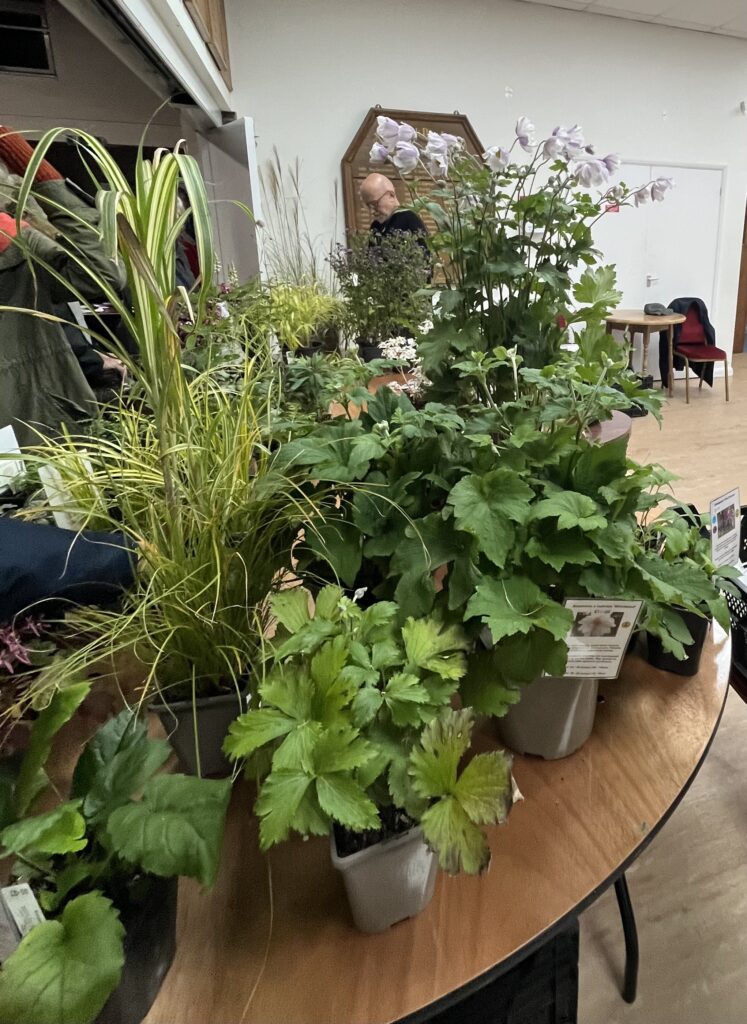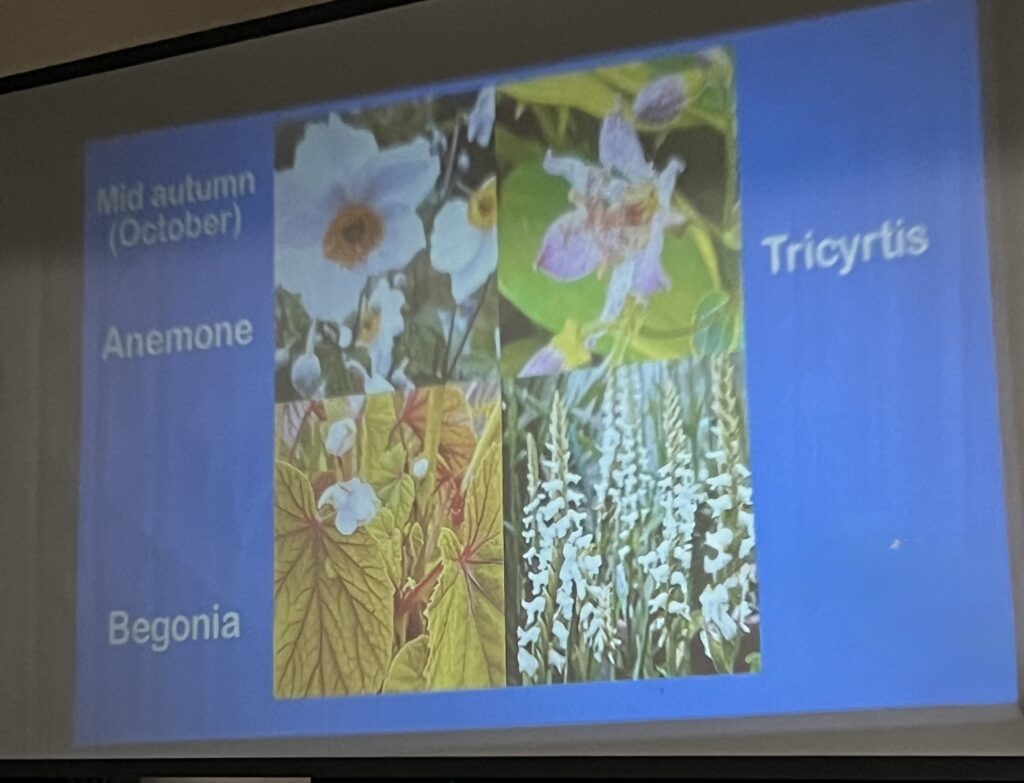The weather this September has been unsettled, with cooler temperatures and a mix of rain, strong wind and sunshine. Make the most of the the dry and sunny days as there is plenty to do in September to prepare for next year. It is also harvesting time for many fruits and vegetables.
Flowers
Dahlias are at their peak in September and if the weather is mild they’ll carry on blooming for several more weeks. Likewise cosmos, zinnias and Japanese anemones.
However, by late summer many gardens plants are starting to run out of steam. There is still plenty life left in them if you carry out few simple tasks:
- Feed and water plants during sunny spells
- Nip off spent flowers to keep the bloom coming
- Remove brown and ragged leaves
- Address powdery mildew – a fungal disease – keep watering and remove debris and overhanging growth to improve air circulation.
- Stake top heavy dahlias and sunflowers especially when high wind is forecast.
Plant spring-flowering bulbs: September and October are the best times to plant daffodil, crocus and iris bulbs, tulips can wait until November.
Saw hardy annual: Nigella, Honesty, Flax, Cornflowers, Poppies, Larkspur … Growing hardy annual flowers from seeds is quick and easy. They are able to survive frost, so can be sown outdoors in autumn. They will survive the winter to bring summer colour to your garden or even your plot. Many will attract pollinators.
- Make sure the area to be sown is weed-free.
- Dig over the soil to a spade’s depth, rake it over and firm.
- Plan the area to be sown by sprinkling grit or sand on the soil or score the ground with a cane to mark out sowing areas. Decide what should go where according to height, habit and colour.
- It is important not to sow into a soil that is too rich, since this may encourage leafy growth at the expense of flowers, so avoid using fertiliser.
- Scatter seeds thinly (or sow into drills) and cover lightly with soil or compost.
- Water well with a watering can fitted with a fine rose.
Plant out biennial: foxgloves, hollyhocks, sweet williams, wallflowers, forget-me not … If you have sown some back in midsummer, or you have young plants from self-seeding, now is the time to plant them into their final positions.
Divide Perennials … dividing spring-flowering perennials this month, will give their roots time to establish before te weather turns cold.
- Dig around the plant and lift from the soil. Knock off excess soil so that the rootball is easier to handle
- Pull apart each section by hand. Discard old or woody growth.
- Replant each section into a planting hole with added co0mpolst in the base. Form in and water well. Keep watering in dry weather.
Leave perennials for wildlife: when tidying up your borders, resist the urge to cut back dying perennials. Many have seedbeds (sedum and thistles) for birds and they can provide shelter for insect as well as protecting the soil from winter weather.
Take cuttings: It is your last chance to take semi-ripe cuttings of verbena, penstemon, salvia, lavender to increase stocks and beat winter losses.
- Select shoots and trim to around 5 cm just below a leaf joint.
- Remove the lower foliage.
- Insert around the edge of a pot of compost.
- Keep moist and out of direct sunlight to root.
Fruit and vegetables
Harvest apples: and lay them carefully to avoid bruising into an open shallow trays. Keep them in a cool frost-free and airy environment.
Harvest and store potatoes: dig them up now and keep them for your home-grown roast potatoes on Christmas Day.
- Once the stems have withered, lift potatoes carefully with a fork on a dry sunny day.
- Leave then on the soil surface to dry their skins for few hours.
- Brush any excess earth (don’t wash them) and pack into paper or hessian bags.
- Keep your bags in a cool frost-free, dark, dry place.
Courgettes and aubergines: pick them regularly to encourage the remaining fruits to develops.
Pumpkins: raise them onto a piece of slate or wood to prevent them from rotting.
Winter salads: Sow lam’s lettuce, mizuna, rockets, mustard leaves.
Plant a strawberry bed: September is the perfect time to create a new patch.
Don’t forget
- Tidy your pond: not to allow plant debris to build up. Tidy plants, thin out growth and put netting over the surface to prevent leaves from falling in to the water.
- Return houseplants inside preparing them for winter: tidy them up removing yellowing foliage, check for pests and ease back on watering and stop feeding.
- Neaten up borders: trim back stems that have flowered in early summer. Cut back dead or flopping stems.
- Protect soils: spread a thick layer of mulch over bare soil to reduce weathering from winter rains. A 7.5cm-thick layer of biodegradable well-rated co post, straw or bark chips around your plants this autumn will deprive weeds of light preventing them from growing.
- Prepare for leaf fall: making a leaf enclosure to create dark, crumbly leaf mould also known as “black gold”. More on how to make leaf mould and its benefits in the October Tips of the month.



